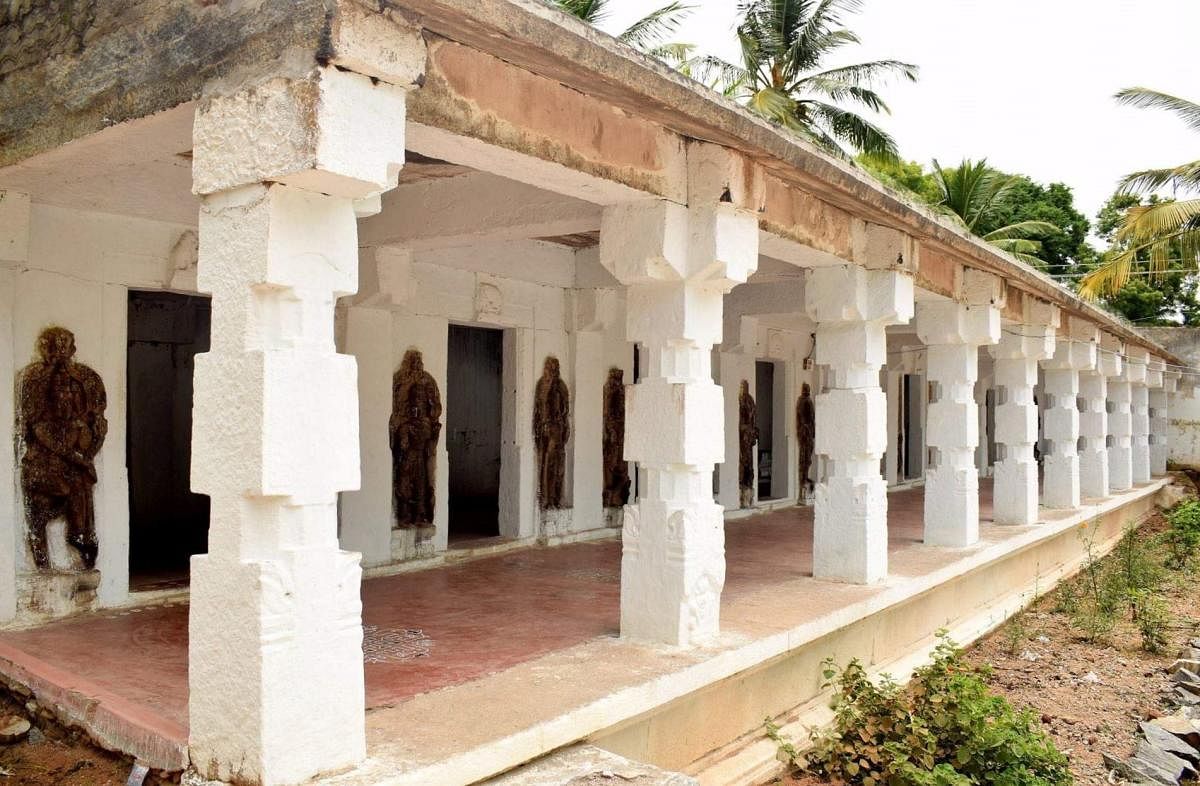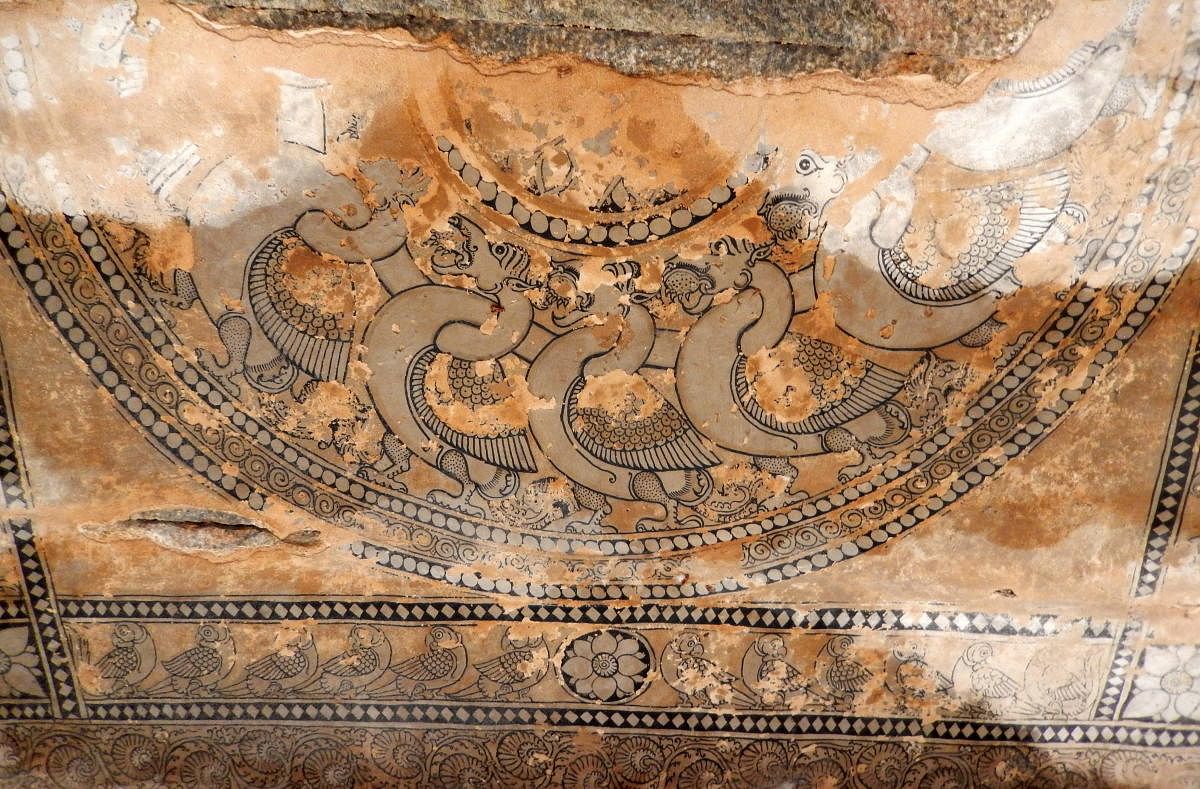

Located 6 km from Chamarajanagar district headquarters, Haradanahalli was once famous for the annual car festival of the Divyalingeshwara temple. Dating from the Hoysala period, the temple attracted a large number of devotees from Karnataka and even neighbouring Tamil Nadu.
Sadly, the story of the temple today is one of neglect.
It was built in 1316 AD by Mara Gauda, a subordinate of Madhava, the Dandanayaka (army general) of Hoysala king Viraballala III.
Originally called Divyalinga Analesvara of Yennenadu, new idols were installed during the reign of succeeding Vijayanagar, Kalale and Mysore rulers. The temple was rich with gifts of gold, silver and precious stones. This led to its being plundered in the year 1787 and the valuables being carried off to enrich the treasury at Srirangapatna.
In the later decades, the story of the temple was one of decay and damage.
The temple’s big 5-tier gopura (the tower on the entrance) collapsed during the rains of 2005. The 42-feet-high garuda kambha lies in pieces in front of the temple ground. Rainwater floods the ranga mantapa inside and water drips into the temple at many places. A room in the ranga mantapa is being used as a storehouse of wooden blocks. During the recent repairs, the locals have put polished tiles on the floor and white-washed the columns, covering their details. The fate of the images is no better.
Even when partially dilapidated, some unique features of the temple stand out. A lofty 40-feet lamp pillar stands in front of the old temple. The navaranga and even the prakara have images of various gods and lesser deities. Some of the pillars have Shaiva figures on them. About 15 inscriptions kept along the north side of the temple wall reveal details about the donors to the temple.
Fading murals
In the rear portion of the temple, there is a long mantapa housing an image of Ganesha and eight lingas of varied sizes.
Each entrance has two dwarapalakas. The ceiling of the pavilion in front of each shrine has beautiful murals, which have partially survived but are threatened by the dampness of the ceiling and walls. At one or two places, the entire painting has disappeared, barely leaving any trace.
The borders of the partially peeled off paintings represent scenes from the Saiva puranas. Those who executed the work must have been skilled men of art, historian C Hayavadana Rao wrote in the Mysore Gazetteer in 1930.
Artist Ganjifa Raghupati Bhat describes them as Vijayanagar style of paintings. Executed on Sastric principles, the use of colours and the strokes resemble the excellent paintings at Lepakshi in Andhra Pradesh. The expertise especially comes through in the design and execution of birds, elephants and floral decorations of the borders. Such detail is rarely seen in other paintings of the old Mysuru region, Bhat says.
These features may place the Haradanahalli paintings at an earlier period than presumed at present, making them special, he adds.
Going by Hayavadana Rao’s statement about the paintings being “at least one hundred years old”, the execution of these murals may be ascribed to the period of Krishnaraja Wadiyar III, a great patron of art.
Perhaps this was compensation for dismantling a mantapa in the prakara and having the materials removed to Chamarajanagara for constructing the Janana Mantapa of his father, Khasa Chamaraja Wadiyar, where the ceiling is said to be illustrated with paintings from the temple.
Krishnaraja Wadiyar embellished several temples in his kingdom highlighting stories from puranas and epics, but what remains today have suffered the ravages of times.
Watch the latest DH Videos here: